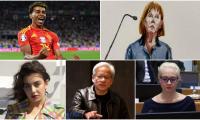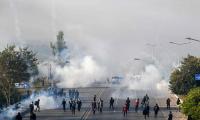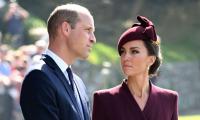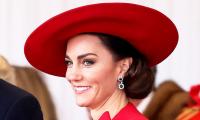A wise friend recently said to me that the PTI is not interested in reforms but the image of reforms. After a month of PTI governance, this seems more and more true. Let’s consider, for instance, some of the austerity measures it has announced.
The PTI government has decided that instead of stale chicken patties, it will serve only biscuits in official meetings. This, of course, isn’t austerity. This is the image of austerity.
The party has also decided, amid much fanfare, to auction some new but mostly dilapidated cars. And amid this worthy zeal to save money, the prime minister uses a government helicopter, without any sense of irony, to visit his estate for the weekends. Of course, it helps that in Naya Pakistan helicopters are cheaper to operate than cars.
PM Imran Khan also pledged to reduce the PM House staff from 530 to two employees. But not one person has been let go. Those people are still working in the PM House and office complex. Again, we see just the image of reform, not reform itself.
The prime minister said that their official car entourages will be limited to two cars. And yet, every day we see clips on television of the president, prime minister, governors and chief ministers travelling in long motorcades. But it is never protocol for PTI leaders. There is always an alternative explanation.
The fact is that the austerity announced by the PTI with so much hoopla doesn’t even amount to Rs5 billion or one-tenth of one-percent of the total direct federal expenditures. And yet, this too is just an announcement. In reality, the austerity has amounted to nothing.
This year, the total budgeted outlays of the federal government are above Rs5,000 billion. The PTI has just presented a revised mini-budget to the National Assembly. And amid all the claims by the PTI that the PML-N government had very high and unwarranted expenditures, the PTI government hasn’t been able to save even 10 percent of the expenditures planned by the PML-N. And, of course, they will actually end up spending more than they have budgeted.
Even if you deduct from total federal spending the expenditures on interest, pensions and defence, and consider only discretionary spending, the savings should still be around Rs300 billion. However, the mini-budget shows that this show-and-tell austerity of the PTI will not result in any savings at all.
Austerity is not the only mantra of the PTI government. It has also decided to raise revenues to curtail the deficit. When the PML-N presented the budget, we estimated this year’s tax revenues to be Rs4,435 billion. But PM Imran Khan had claimed then that because of his personal credibility, he would double the revenues to Rs8,000 billion.
Yet, in the mini-budget no revenue increase is being projected due to the prime minister’s personal credibility. The revenue that has been projected to increase is coming from both currency devaluation and the imposition of regulatory duties, which are indirect taxes – something our current finance minister, Asad Umar, used to oppose in ‘Purana’ Pakistan.
But this, of course, is Naya Pakistan and now no conversation on the economy is complete without speaking about the supposed $200 billion stashed abroad by Pakistanis. Again, it would be interesting to see if the PTI government can bring back even 10 percent or $20 billion in the next year or two. If it does, then our foreign exchange worries would be over and indeed we would have six months of import cover, eradicating the need for going to any foreign government or institution to borrow money.
The PTI has come up with a new and novel fiscal instrument: donations. It is trying to build the biggest infrastructure project in the history of Pakistan – the Diamer-Basha Dam – with the help of donations. The cost estimate of the dam is $14 billion or Rs1,750 billion. Frankly, the government won’t be able to raise even one percent or Rs17.5 billion from the donations of local or overseas Pakistanis.
But old habits die hard. PM Khan has collected donations (for worthy causes) his whole life and when he came into the government and faced the momentous task of building Diamer-Basha, he reverted to type and started collecting donations. Similarly, PML-N leader Mian Nawaz Sharif has built things all his life, from Ittefaq Foundry onwards, and whenever he’s in government he’s built roads, bridges, power plants, etc. But this, of course, also means that the PML-N during its latest tenure ignored some soft but critical issues such as civil service reforms, public-sector enterprise reforms and legal reforms. This, I think, was one of our major weaknesses in an otherwise exemplary governance record.
Water is a serious issue in Pakistan and the previous PML-N government spent around Rs100 billion to acquire the land for the Diamer-Basha Dam. Another Rs22 billion were earmarked for it in the budget for the current fiscal year. If the PTI is serious about building the dam, it should start allocating major government resources to the dam instead of wasting time on frivolous ideas.
The PML-N added 11,000 MWs of capacity in five years, not through social media memes and donation campaigns but by devoting serious government resources to the problem. It also built 1,700 kilometres of motorways, again not by asking people for donations but by devoting government resources to infrastructure projects. In other words, the PML-N put its money where its mouth was. It’s time for the PTI to get serious too.
The writer has served as federalminister for finance, revenue andeconomic Affairs.
Twitter: @MiftahIsmail
Analysis of registered candidates reveals that many come from 15 districts affected by floods, poverty and poor...
US-Pakistan relations need to steer clear of the global power competition that dominates geopolitical landscape
Right to privacy is fundamental human right, backed by Quran and Hadith, to maintain dignity
For its part, Pakistan must avoid projecting urgency in resolving these tensions
We will remember Saeeda Gazdar as a potent voice of courage and bravery
Economic nationalism remains potent political narrative, influencing both Republican and Democratic platforms







